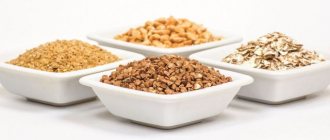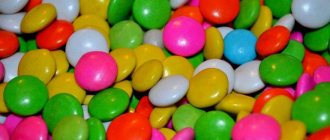By autumn, the season of ripening of melons and melons begins. Juicy watermelons and fragrant melons beckon. Moreover, these beautiful berries are loved not only by people. Our smaller brothers also have a weakness for sweet fruits. Today we’ll talk about whether a dog can eat melon. Sometimes animals surprise you with their taste preferences. Some dogs simply lose their temper while the owner is cutting a melon, begging in every possible way for at least a piece. At the same time, each owner may have his own opinion about whether a dog can have a melon. Our task is to find out what veterinarians think about this.
Product benefits
In order not to be unfounded, you must first understand what melons give to the body, what their pros and cons are. Of course, these are very tasty, juicy and tender berries. It's very difficult to argue with this. But this does not answer the question of whether a dog can have melon. So, it contains a huge amount of useful substances. These are glucose and carotene, sodium and iron, potassium, calcium and silicon. Moreover, these are only those substances that are contained in large quantities.
When talking about whether a dog can eat melon, we must not forget about the vitamins in its composition. These are vitamins B, A, C, PP, which play a huge role in the functioning of the body. But our pets are not much different from their owners.
Restrictions
There is a widespread belief among dog breeders that melon is harmful to dogs. This opinion is justified by the fact that this vegetable contains a lot of sugar, which is toxic to the animal’s body in large quantities.
In fact, the product is completely harmless in this regard, since it does not contain pure sugar, but fructose.
Even in small quantities, it gives melons a very sweet taste, which is mistakenly perceived as a high sugar content. This is how melon differs from raisins.
However, consuming the product in large quantities can lead to negative consequences :
- as noted above, melon has a laxative effect, the strength of which depends on the amount eaten. Therefore, overfeeding will give a very unpleasant result, especially if the animal is kept in an apartment and cannot leave the house without permission to go to the toilet;
- the diuretic effect will also not take long to appear. After overeating this vegetable, the dog will often ask to go outside, or urinate in the house, unable to wait to go for a walk;
- overeating can also cause upset of the digestive system as a whole.
Melons that appear on store shelves a month before the start of the melon season or after its end, as a rule, contain large amounts of nitrates and other toxic substances that can cause severe poisoning and serious illness in your pet. Therefore, it is not recommended to frequently feed him melon during the off-season for melons.
Dalmatians, Great Danes and other breeds
It is also not recommended to give to pets of these and other breeds that suffer from digestive problems, weak stools, bloating, or are predisposed to similar diseases.
Important! Eating melon can be life-threatening for pets with diabetes due to increased blood glucose levels.
Effect on the body
Let's now see how melons affect the functioning of internal organs. Based on this, it will be possible to decide whether the dog can be given melon. Regular consumption of this berry normalizes the nervous system. If you have a long journey ahead, offer your pet a piece of melon. In addition, the potassium contained in the composition supports the cardiovascular system and helps remove cholesterol.
But that is not all. If your pet suffers from constipation, then melon will be of great help to your dog. It enhances bowel function and produces a mild laxative effect. Veterinarians note the considerable benefits of melon in the treatment of kidneys, due to its diuretic effect. Thanks to its fiber and low calorie content, it becomes indispensable in the treatment of obesity, which is often a consequence of apartment living. Among other things, melon helps support immunity.
Giving with caution
You can feed your dog melon, but you must follow the veterinarian's recommendations. Melon culture has a huge number of advantages. But the owner must understand well that vegetables and fruits in the pet’s diet occupy an additional, and not the main place. This is a predator that must eat meat, that is, a protein product. Melon is loaded with carbohydrates and also contains a lot of sugar, which can be dangerous for dogs.
Experienced dog breeders say that in small quantities, a couple of times a week, melon can be included in a dog’s diet. A piece of delicacy can be a very appropriate dessert after the main meal. You can give it only the pulp, without the peel.
Optimal dosage
Feeding your dog melons must be done with caution. The first time we give the dog 2-3 pieces of melon, peeled and seeds removed. It is necessary to pay attention to the condition of the dog and the normal functioning of the digestive system. If there are no problems, the dosage can be increased to 5-6 pieces (for large dogs 10-12). Maximum – 2 times a week and only during the crop ripening season. No frozen or processed foods!
Finally, if your pet refuses dessert on his own, so be it. Often, animals, guided by the internal reflexes of the body, understand at the level of instinct what products they need!
If the dog refuses melon
Indeed, if some beg for more, others will most likely refuse such a treat. It mainly depends on how you feel and the time of year. Some breeds are thought to be more likely to eat fruit than others. But veterinarians believe that this depends more on individual characteristics and eating habits, as well as well-being and the time of year. In hot weather, the dog eats melon not for its taste, but as a source of liquid and coolness. In any case, you should not try to force feed your pet. If he doesn’t want fruit now, it means he doesn’t need it.
Correct inclusion of melons in the dog menu
If your dog enjoys eating melon, include its pulp in your pet's diet carefully. There is no need to rush - only with the correct introduction of the product the animal’s body will gratefully accept the nutrients contained in the berry.
It’s better to start with 2-3 small pieces a day, no more than 3 times a week. In the absence of negative consequences, the daily portion can be increased to 10-12 pieces.
Note! Melon is a heavy product and is well digested when eaten separately from other foods. It is preferable to give melon pulp 1.5-2 hours before the main meal.
The dog did not eat all the pulp offered - throw away the rest. Next time give a fresh product.
If your pet doesn't like yellow berries, don't force him to eat melon pulp. Do not try to mix the product into the main food - when forming a diet, base it on the preferences of your pet.
Overfeeding
If, on the contrary, your pet really liked the fruit, then do not leave it within reach. In the practice of veterinarians, it is not uncommon for a dog to eat a melon and come to the appointment with acute bloating or volvulus. Breeds such as the Basset Hound are especially prone to this.
Even if the animal does not have digestive problems, overeating melon leads to a laxative effect and excessive urination. In apartment conditions, this can lead to unpleasant consequences for the animal and its owner.
Fruits that are unsafe
Citrus
In most cases, feeding a dog citrus fruits causes unpleasant consequences (causing vomiting and a laxative effect), but there have still been cases where some dogs happily ate them without any consequences. Therefore, the dog itself will let you know whether it wants to eat citruses or not.
Grape
Kidney failure in dogs can occur after eating grapes. Grapes often cause attacks of vomiting, weakness and diarrhea in dogs.
Pomegranate
Pomegranate is strictly prohibited for dogs. Even though pomegranate in general provides great benefits to the human body, it will cause stomach problems in a dog. This is due to the strong difference between human digestion and the digestion of dogs (who have a strong sensitivity to acids).
Avocado
Avocado is a fruit that contains a substance that causes vomiting, diarrhea, difficulty breathing, heart problems and pancreatitis in dogs. The fruit is contraindicated for dogs.
Peaches
The fruit contains a harmful substance, cyanide, which gradually accumulates in the body. Peaches cause diarrhea, and if the dog also eats the pits, this can lead to intestinal problems and poisoning.
Quince
The fruit causes vomiting. Also, quince is very sour and not every person will like this fruit.
Cherries and sweet cherries
Completely useless fruit for dogs, and there is no point in giving it to dogs. Overeating cherries leads to various stomach disorders.
Wait for the season
You can start enjoying melons from mid-August. At this time, a large number of high-quality fruits arrive on the shelves, which have ripened in the sun, without any special accelerators. Until about mid-September, you will be able to safely eat melons and treat your pet. It is at this time that amateurs prepare it for future use. To do this, pieces of pulp can be dried or frozen. But if you want the workpiece to be preserved throughout the winter, the storage temperature should be at least -18 degrees. That is, a regular freezer will provide storage for a month.
How else to diversify your diet
If your pet enjoys eating melon, then you should make sure that during the rest of the year his diet is supplemented with various sources of fiber and carbohydrates. Experts recommend eating only seasonal fruits that grow in your region. But you need to be careful with exotic fruits. This is especially true for the use of seeds contained in them. It is not recommended to give dogs grapes, as this puts increased stress on the liver and pancreas.
The most useful alternative
One of the best options for your pets is apples. Small dogs can be given half a day; it is better to give puppies starting with a tiny piece. A large dog can eat a whole apple, and its body will only benefit from this. Please note that red fruits are best avoided. Give preference to yellow and green fruits.
If you only have red apples at home, then you shouldn’t leave your dog without dessert. Peel the fruit and be sure to remove the core. It contains a large number of substances hazardous to digestion. Offer the animal a few pieces and observe the dog's reaction. If everything is in order, then you can give red apples as well. The benefit of this fruit also lies in the fact that chewing helps maintain dental health. Chewing pressure allows you to cleanse your teeth of plaque.
If it gets bad
A negative reaction of a dog’s body to pineapple can manifest itself as an allergy. At the first signs: redness of mucous membranes, scratching of the skin, discharge from the nose and eyes, swelling, changes in stool, first aid must be provided:
- take a course of antihistamine;
- a course of absorbent drugs - activated carbon or Enterosgel;
- go on diet food for two to three days.
If the symptoms do not disappear, or the allergic reaction is severe, it is recommended to contact a veterinarian to prescribe treatment.
If your dog has gastritis, eating pineapple can cause an exacerbation of:
- pain - whining;
- refuses to eat or decreases appetite;
- apathy, activity is significantly reduced;
- nausea, vomiting, fever.
In this case, help will consist of gastric lavage (without drugs), after which you cannot feed for a day, ensuring constant access to water. Start your diet with rice or oatmeal broth. And be sure to contact a veterinarian to stop the exacerbation.
Baking fruit
Pears are no less useful. However, like apples, they contribute to increased gas formation. To reduce the load on the intestines, they are baked. It must be borne in mind that fruits should not make up more than 20% of the diet. Otherwise, the dog faces indigestion. If the dog suffers from constipation, then after preliminary consultation with a veterinarian, you can increase the amount of fruits and the frequency of their presence in the animal’s diet. It is very important to take into account your pet’s taste preferences. If the dog does not eat apples, there is no need to force it. It is enough to offer her other fruits.
If fruits are contraindicated
Such cases are also not uncommon. At the same time, it is not at all necessary to limit the diet to meat and porridge, because fiber is very important for the dog’s body. In nature, predators obtain it by eating grass, as well as the contents of the stomachs of their herbivorous victims. At home, the dog cannot hunt, so it is necessary to supplement the diet with vegetables. Carrots are very useful. It contains a huge amount of vitamins, rich in potassium, calcium and iron. It can be given fresh, baked and boiled.
Second place goes to green beans. This healthy vegetable can successfully replace peas and other legumes because it does not put such a strain on the digestive organs. It is an excellent source of vitamin C and K, manganese and other nutrients. Broccoli is a storehouse of nutrients, if, of course, the dog agrees to eat it. In addition to vitamins and minerals, broccoli protects against cancer, which is very important if the animal lives in environmentally unfavorable regions.











